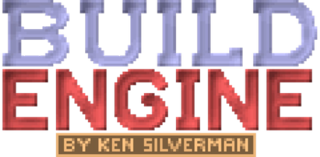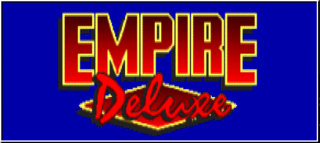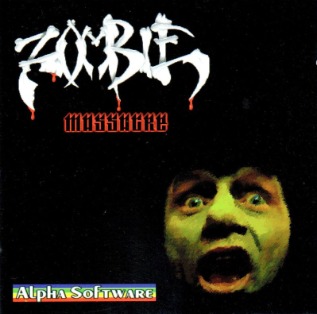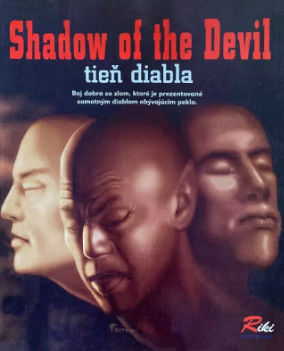
Amiga is a family of personal computers introduced by Commodore in 1985. The original model is one of a number of mid-1980s computers with 16- or 16/32-bit processors, 256 KB or more of RAM, mouse-based GUIs, and significantly improved graphics and audio compared to previous 8-bit systems. These systems include the Atari ST—released earlier the same year—as well as the Macintosh and Acorn Archimedes. Based on the Motorola 68000 microprocessor, the Amiga differs from its contemporaries through the inclusion of custom hardware to accelerate graphics and sound, including sprites and a blitter, and a pre-emptive multitasking operating system called AmigaOS.

The Build Engine is a first-person shooter engine created by Ken Silverman, author of Ken's Labyrinth, for 3D Realms. Like the Doom engine, the Build Engine represents its world on a two-dimensional grid using closed 2D shapes called sectors, and uses simple flat objects called sprites to populate the world geometry with objects.

The Quake engine is the game engine developed by id Software to power their 1996 video game Quake. It featured true 3D real-time rendering. Since 1999, it has been licensed under the terms of GNU General Public License v2.0 or later.

The Sentinel, released in the United States as The Sentry, is a puzzle video game created by Geoff Crammond, published by Firebird in 1986 for the BBC Micro and converted to the Commodore 64, Amstrad CPC, ZX Spectrum, Atari ST, Amiga and IBM PC compatibles. The Sentinel was among the first games to use solid-filled 3D graphics on home computers. It won numerous awards upon release and has since appeared on several "best video games of all time" lists.
Artworx was a Naples, Florida software company that produced and supported a line of computer games from 1981 to 2015. It is named after the founder's given name. At first the company published a variety of games, including titles in adventure and arcade-action genres, but were later best known for a strip poker series.
CDS Software was an independent publisher and developer of computer game software based in Doncaster, South Yorkshire, UK.

Gloom is a 1995 computer game for the Amiga computer. Gloom was the first commercially released Amiga clone of first-person shooter Doom.
Amiga software is computer software engineered to run on the Amiga personal computer. Amiga software covers many applications, including productivity, digital art, games, commercial, freeware and hobbyist products. The market was active in the late 1980s and early 1990s but then dwindled. Most Amiga products were originally created directly for the Amiga computer, and were not ported from other platforms.

The Ultimate Soundtracker, or Soundtracker for short, is a music tracker program for the Amiga. It is the creation of Karsten Obarski, a German software developer and composer at EAS, a video game development company.

Alien Breed 3D is a first-person shooter developed for Amiga by Team17 and distributed by Ocean Software in 1995. It is the fourth installment in Alien Breed franchise, a series of science fiction-themed shooters.

Empire is a 1977 turn-based wargame with simple rules. The game was conceived by Walter Bright starting in 1971, based on various war films and board games, notably Battle of Britain and Risk. The game was ported to many platforms in the 1970s and 1980s. Several commercial versions were also released such as Empire: Wargame of the Century, often adding basic graphics to the originally text-based user interface.
MicroIllusions was a computer game developer and publisher of the home computer era. Based in Granada Hills, California, the company was a strong supporter of the Amiga and typically released titles on that platform before porting it to others.

Zombie Massacre is a 1998 video game for the Amiga computer. It is a clone of the first-person shooter Doom.
The Game Creators Ltd is a British software house based in Macclesfield, Cheshire, England, which specialises in software for video game development, originally for the Microsoft Windows platform. The company was established in March 1999 through a partnership between programmers Lee Bamber and Richard Vanner, who were joined by Meash Meakin in 2011 and Deborah Ascott-Jones in 2013.

Shadow of the Devil is a 1996 Slovakia Point-and-click adventure released on the Amiga.

Breathless is a first-person shooter released in 1995 for the Amiga 1200 developed by Fields of Vision and published by Power Computing. The game is set in a gladiatorial arena ran by alien overlords who have turned rebelling humans into cyborgs, featuring twenty levels that feature maps of varying height and the player seeking keycards or pressing switches to progress. Breathless received generally positive notices in the Amiga press, following several previews and demos being released. The game was later ported to the Amiga CD32 in 2014. The game's source code was released in 2017, leading to projects to port the game to modern PCs.

Fears is a first-person shooter released in 1995 for the Amiga 1200 developed by Bomb Software and published by Manyk. The game features thirty levels, and also includes a built in level editor. Fears received average to positive notices in the Amiga press, following the release of previews and a demo, with retrospective reviews more critical. The game was reissued for a 25th Anniversary Edition in 2020.

Cytadela or Citadel is a 1995 first-person shooter developed by Virtual Design and published by Black Legend and Arrakis Software for the Amiga 500 and later. The game is set on a prison island in the middle of a prisoner revolt. The game received generally positive reviews in the Amiga press. An open-source version for modern PCs was started in 2006. A fixed up version for the original Amiga was released in 2022. The source code to the original was also released.












